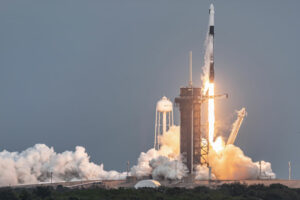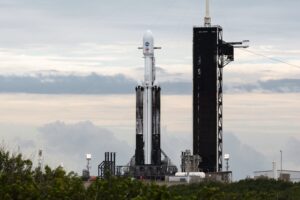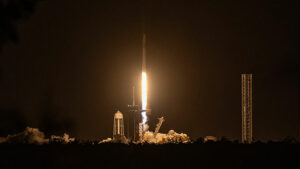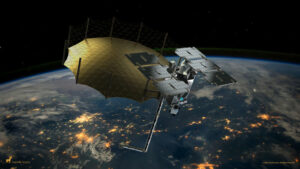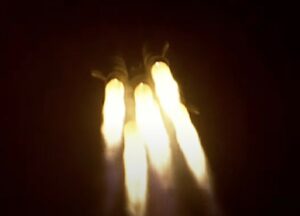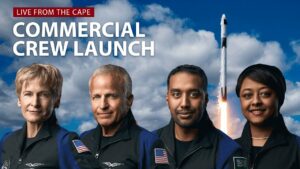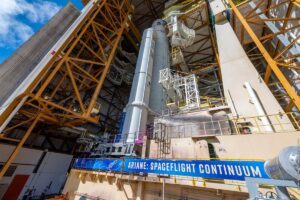
SpaceX will test fire a Falcon 9 on pad 40 at Cape Canaveral tonight to clear the booster for its 16th flight. A launch attempt early Friday was aborted in the final minute of the countdown. SpaceX did not disclose the reason for the scrub.
SpaceX is pushing the envelope for the second time this week by attempting to fly a Falcon 9 rocket for the 16th time. On Sunday night another booster lifted off from the same launch pad becoming the first Falcon 9 rocket to make a 16th flight. Previously the Falcon 9 first-stage had been certified for use up to 15 times.
During tonight’s test the Falcon 9’s nine Merlin engines will ignite for a few seconds while the rocket is held down on the launch pad. You can watch views of pad 40 in our 24-7 Launch Pad Live stream. If all goes according to plan, and no significant problems are detected, SpaceX will make another attempt to launch the rocket on Saturday night at 11:50 p.m. EDT (0350 UTC).
<img src="” class=”lazy lazy-hidden” data-lazy-type=”iframe” alt>
[embedded content]
The Falcon 9 first stage booster, tail number 1060, previously launched GPS III-3, Turksat 5A, Transporter-2, Intelsat G-33/G-34, Transporter-6, and 10 Starlink missions. It will be only the second booster to have flown 16 times, following close of the heels of Booster 1058’s launch of 22 second-generation Starlink satellites.
This mission, designated Starlink 5-15 will loft the last 54 older-generation Starlink V1.5 satellites. Earlier this year SpaceX started placing a new generation of Starlink satellites in orbit, known as Starlink V2 Minis, which are larger and offer four times the broadband capacity of the older-design satellites.
The Starlink network provides high-speed, low-latency connectivity to customers around the world. SpaceX says each Starlink launch adds more than a terabit per second of capacity to the constellation.
SpaceX currently has 4397 functioning Starlink satellites in space, according to a tabulation by Jonathan McDowell, an expert tracker of spaceflight activity and an astronomer at the Harvard-Smithsonian Center for Astrophysics.
If all goes according to plan, the first-stage booster will land on the drone ship ‘A Short Fall of Gravitas’ in the Atlantic Ocean about eight and a half minutes after launch. The 54 Starlink satellites will be deployed just over an hour after launch.
- SEO Powered Content & PR Distribution. Get Amplified Today.
- PlatoData.Network Vertical Generative Ai. Empower Yourself. Access Here.
- PlatoAiStream. Web3 Intelligence. Knowledge Amplified. Access Here.
- PlatoESG. Automotive / EVs, Carbon, CleanTech, Energy, Environment, Solar, Waste Management. Access Here.
- BlockOffsets. Modernizing Environmental Offset Ownership. Access Here.
- Source: https://spaceflightnow.com/2023/07/15/spacex-to-test-fire-falcon-9-booster-following-last-minute-launch-scrub/
- :has
- :is
- :not
- ][p
- $UP
- 10
- 11
- 15%
- 16
- 22
- 40
- 50
- 9
- a
- About
- According
- activity
- Adds
- After
- All
- an
- and
- Another
- ARE
- around
- AS
- astrophysics
- At
- attempting
- BE
- becoming
- been
- booster
- broadband
- by
- CAN
- Capacity
- Center
- Certified
- clear
- Close
- Connectivity
- content
- countdown
- Currently
- Customers
- deployed
- designated
- detected
- DID
- Disclose
- down
- drone
- each
- Earlier
- Early
- embedded
- Engines
- expert
- falcon
- Falcon 9
- Fall
- few
- final
- Fire
- First
- flight
- following
- For
- four
- Friday
- from
- functioning
- generation
- Goes
- gps
- had
- Half
- Have
- Held
- hour
- HTML
- http
- HTTPS
- if
- Ignite
- image
- in
- IT
- ITS
- jpg
- just
- known
- Land
- larger
- Last
- launch
- launched
- Lifted
- live
- make
- max-width
- merlin
- minute
- minutes
- Mission
- missions
- more
- network
- New
- night
- no
- number
- ocean
- of
- off
- on
- only
- Orbit
- our
- over
- pad
- per
- photo
- placing
- plan
- plato
- Plato Data Intelligence
- PlatoData
- player
- previously
- problems
- provides
- Pushing
- reason
- rocket
- same
- satellites
- saturday
- says
- Second
- seconds
- Short
- significant
- Space
- spaceflight
- SpaceX
- Stage
- starlink
- started
- stream
- test
- than
- The
- the world
- this
- this week
- this year
- time
- times
- to
- use
- UTC
- v1
- Video
- views
- was
- Watch
- week
- which
- while
- will
- world
- year
- you
- youtube
- zephyrnet


